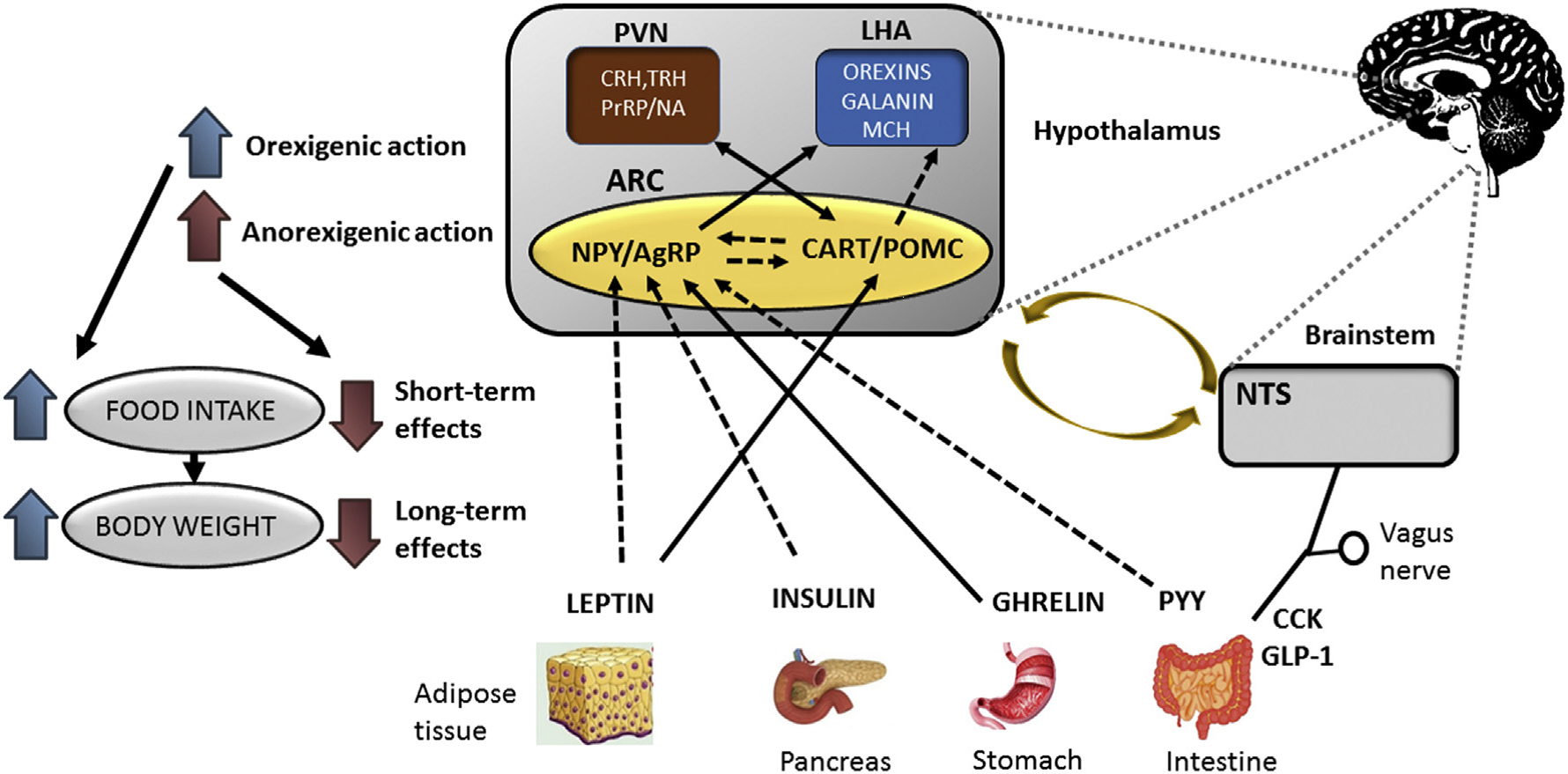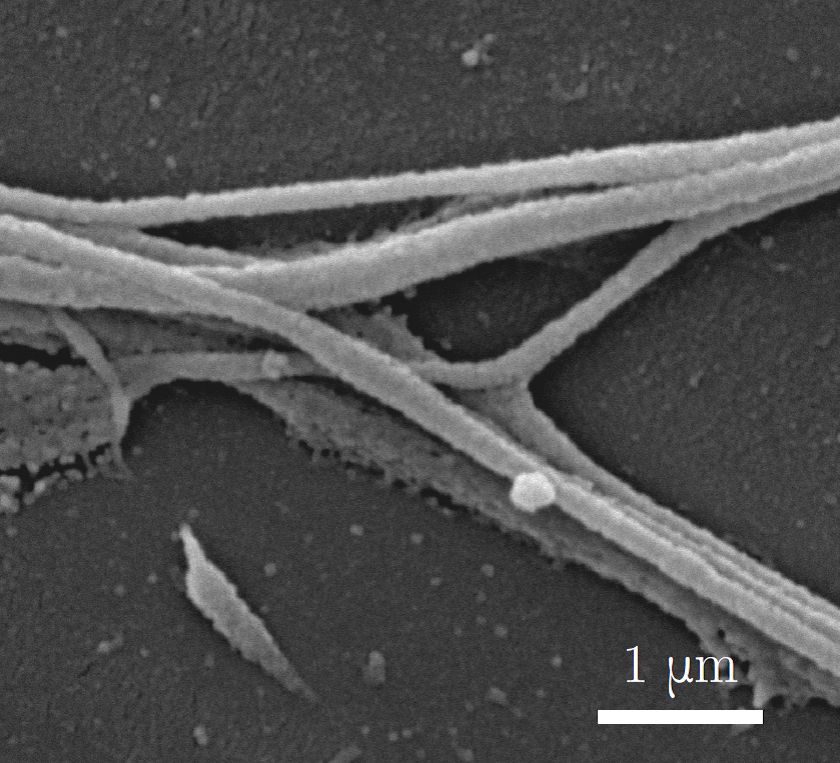Prolactin-releasing peptide: a new tool for obesity treatment
Obesity is currently a worldwide threat, since it is associated with increased incidence of type 2 diabetes, high blood pressure, mortality from cardiovascular disease and etc.
The regulation of food intake and energy expenditure is a complex process (Fig. 1) and is therefore very difficult to find an ideal medicine. In the natural regulation of food intake, peptides which are secreted and acting in the gastrointestinal tract or in different parts of the central nervous system, mainly in the hypothalamus play important role. One of these peptides is a prolactin-releasing peptide (PrRP). We have previously demonstrated that the lipidized PrRP analogs are capable to reduce food intake, body weight (Fig. 2), improved glucose tolerance as well as other metabolic parameters after long-term application to obese mice or rats. In the present article, we have tried to summarize our results concerning the effects of PrRP in confrontation with other published data. Our results clearly show that lipidized PrRP analogs are attractive candidates for the treatment of obesity and type 2 diabetes.

Fig. 1. The schema of interrelationship between central and peripheral factors regulating of food intake. The solid lines indicate a stimulatory effects and dotted lines indicate an inhibitory effects. PVN - paraventricular nucleus, LHA - lateral hypothalamic area, ARC - arcuate nucleus, NTS - solitary tract nucleus, CRH - corticotrophin-releasing hormone, RH - thyrotropin-releasing hormone, PrRP - prolactin-releasing peptide, MCH - melanin-concentrating hormone, NPY - neuropeptide Y, AgRP - agouti-related peptide, CART - cocaine- and amphetamine-regulated transcript peptide, POMC - pro-opiomelanocortin, CCK - cholecystokinin, GLP-1 - glucagon-like peptide-1.

Fig. 2. Palmitoylated PrRP31 and myristoylated PrRP20 reduce food intake and body weight of diet-induced obese (DIO) mice. Effect of 14-day administration of palm-PrRP31 and myr-PrRP20 on (A) food intake and (B) body weight of DIO mice. Mice were subcutaneously administered by saline or peptides at a dose of 5 mg/kg twice daily (n = 10). The data were analyzed by one-way ANOVA. *P < 0.05, **P < 0.01, ***P < 0.001 vs saline-treated group.
Kuneš, J., Pražienková, V., Popelová, A., Mikulášková, B., Zemenová, J., Maletínská, L.: Prolactin-releasing peptide: a new tool for obesity treatment. Journal of Endocrinology. Roč. 230, č. 2 (2016), R51-R58. IF=4.498
The role of peptides regulating food intake in cardiovascular system regulation is described in the following review article: Mikulášková, B., Maletínská, L., Zicha, J., Kuneš, J.: The role of food intake regulating peptides in cardiovascular regulation. Molecular and Cellular Endocrinology. Roč. 436 (2016), s. 78-92. IF=3.859
